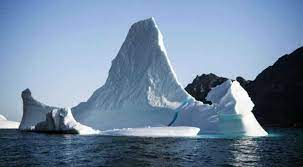
Precipitation fell at the highest point on the Greenland ice sheet as rain and notice for the first time on record. The rain fell for several hours at the ice sheet’s 3,216-metre summit on August 14, where temperatures were recorded above the freezing point for around nine hours.
Daily Current Affairs Quiz 2021
Greenland, which is the world’s largest island located between the Arctic and Atlantic oceans, has three-quarters of its surface covered with a permanent ice sheet– which is increasingly coming under threat because of climate change.
The rain, coupled with warm conditions, caused a major melting event at the summit, adding to concerns of rapid ice melting running off into the ocean in volumes, thus accelerating global sea level rise.
Greenland, which is two-thirds the size of India, already witnessed one of its most severe melting events of the past decade last month, when it lost 8.5 billion tons of surface mass in one day– the third such extreme event in the past decade.
The UN’s “code red” climate report released last week concluded that the burning of fossil fuels led to Greenland melting in the last 20 years.
The rapid melting is also threatening polar bears, which now have to make their way hundreds of kilometres towards Greenland’s interior from the coasts, where they usually find enough food.





